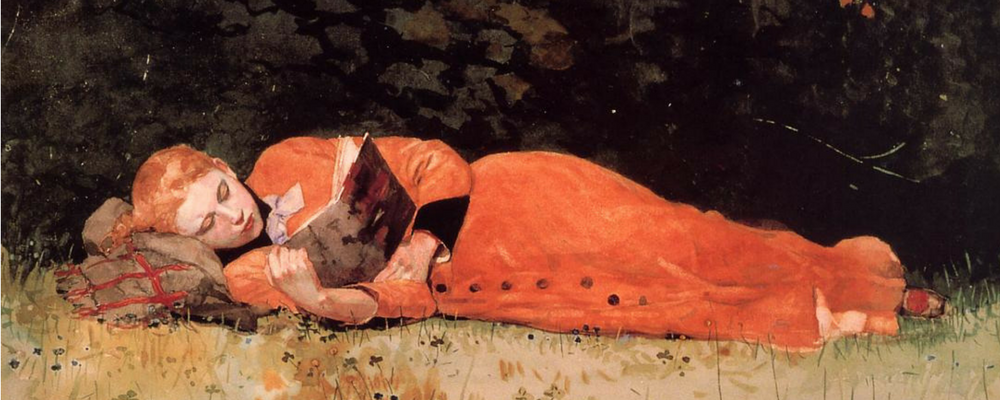
Today we say goodbye to Cecily Erin Hill, our Communications and Marketing Director, who has relocated and leaves us for new opportunities. Since she joined the Books@Work team, she has written many posts and helped us to share our story. Please join us in wishing her well in her next endeavors and thanking her for thoughtful and compelling contributions. —Ann Kowal Smith, Executive Director, Books@Work
At first glance, Maria Semple’s Where’d You Go, Bernadette might not seem like it would merit four weeks of discussion. The novel has a bright cover, featuring a sunglasses-bedecked woman and blurbs from the New York Times and young adult author John Green. “Divinely funny” and “A moving, smart page turner . . . the funniest novel I’ve read in years,” these two sources respectively proclaim. A “funny” story told from the perspective of a fifteen-year old girl, Where’d You Go, Bernadette seems like it is more appropriate for a day at the beach than a law firm’s meeting space or a college course.
And yet, the novel is much more than a coming-of-age comedy. Where’d You Go, Bernadette is packed with insights into adult and familial relationships. It provokes meditations on community, compassion, and empathy. In writing the book, Maria Semple adapted many conventions of the eighteenth-century novel while making more recent cultural history her subject matter. And that bright, beachy cover? It’s not so much a bid for summer-reading-list status as it is a reflection of the novel’s open interest in playful, postmodern art.
I read my fair share of literary fiction and the classics, but I have a soft spot for popular fiction – and not just because it’s fun. Truth be told, most of the literary works we think of as classics were popular in their day. Although Shakespeare’s plays were performed at court, they were primarily written for the common people who could see them for as little as a penny. Charles Dickens was so popular that he toured to sold out readings throughout the United States and Europe. In many senses, popular novels have more in common with the “great literature” than the contemporary literary fiction featured by prestigious publications and prizes.
The beauty of popular literature is that thinking and talking about it helps shine a light on the way we live now. When I taught the novel in a recent Books@Work program, Where’d You Go, Bernadette provoked a wide range of conversations, some serious, some lighthearted. We talked about families – about parents and parenting, private and public schools, and the effects of childhood illness. We talked about communication, and especially about the way technology can isolate us. We laughed over Bernadette’s antics, while we also worried about her – was she suffering from mental illness? Popular fiction like this novel enables deeply personal reflection. It brings our differences and similarities to the fore, helping us think about our personal histories and motivations.
What is more, popular fiction is accessible, and accessibility holds real value. Reading is a skill, like any other. It requires practice. An accessible book, especially an exciting one, opens up literature discussions to a wider range of people – often including people who wouldn’t typically consider themselves readers. And talking about popular novels can also help us learn to think critically about our own culture. The Hunger Games can encourage discussions about the nature of tyranny and dictatorship. It can inspire people to think more carefully about poverty and race. And The Da Vinci Code, a 21st-century thriller, can bring hundreds of years of art history to new audiences. Dan Brown’s writing might not be everyone’s cup of tea, but his novels are well researched. Taking his writing seriously, and exploring the broader context, dignifies his effort – and the pleasure of the people who enjoy it.
At Books@Work, we use a variety of books in our seminars. We teach classics like Frankenstein, Othello, and Dr. Jekyll and Mr. Hyde – all popular works, in their times. We teach mysteries like Learning to Swim and narrative nonfiction like The Zookeeper’s Wife and Into the Wild. We teach science fiction and memoir and contemporary popular fiction. But we’ve also taught The Hunger Games and The DaVinci Code. If we’ve learned anything from our wide-ranging reading list, it’s that all of these works inspire thought-provoking conversations; they all have something to teach, albeit different things. At Books@Work, we seek the conversation, and are open to the many paths that lead our participants to an open, respectful dialogue.
So, pick up the next Gone Girl, or the newest book by Stephen King – read what gives you pleasure and keeps you reading. But why not, next time, grab a friend to read as well and have a conversation?
Image: Winslow Homer, The New Novel, 1877, Museum of Fine Arts, Springfield, MA, [Public Domain] via Wikiart.org
Learn More About Our Programs or Read More on The Notebook

